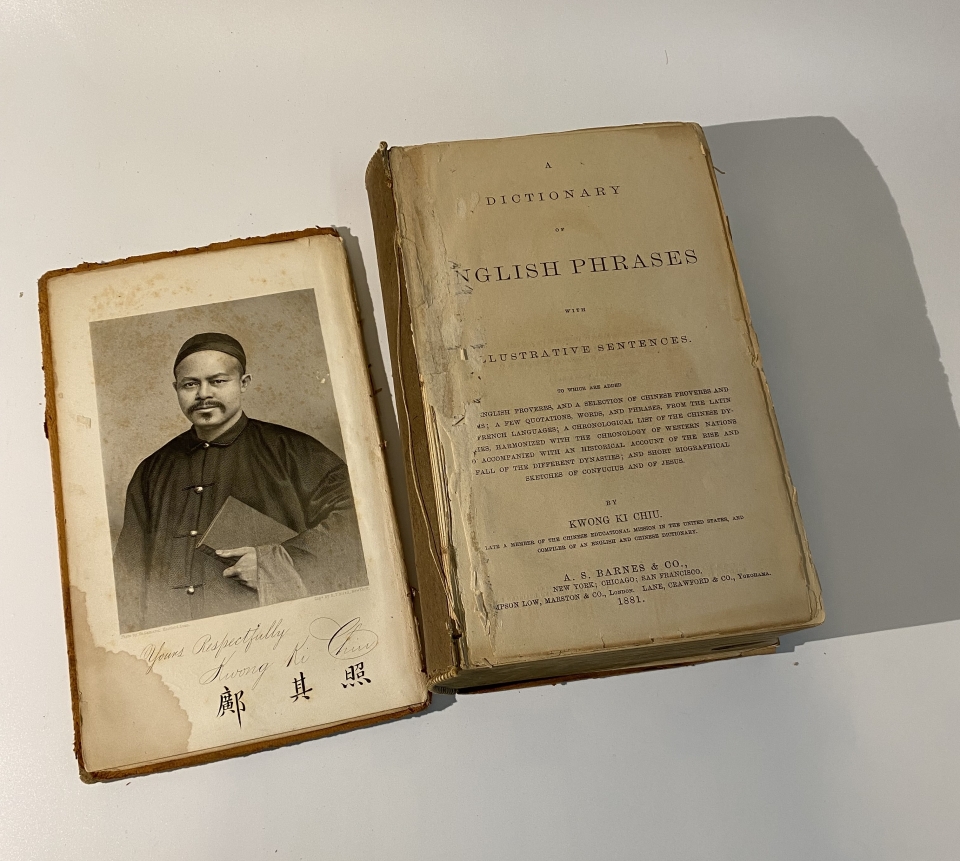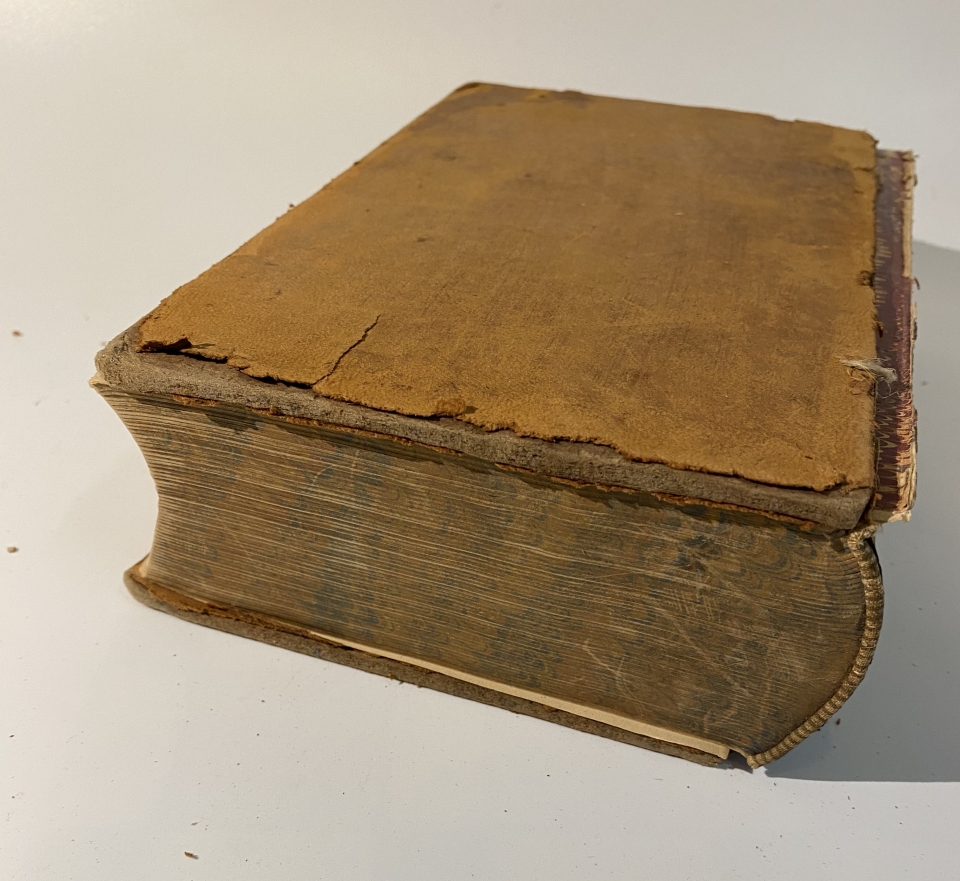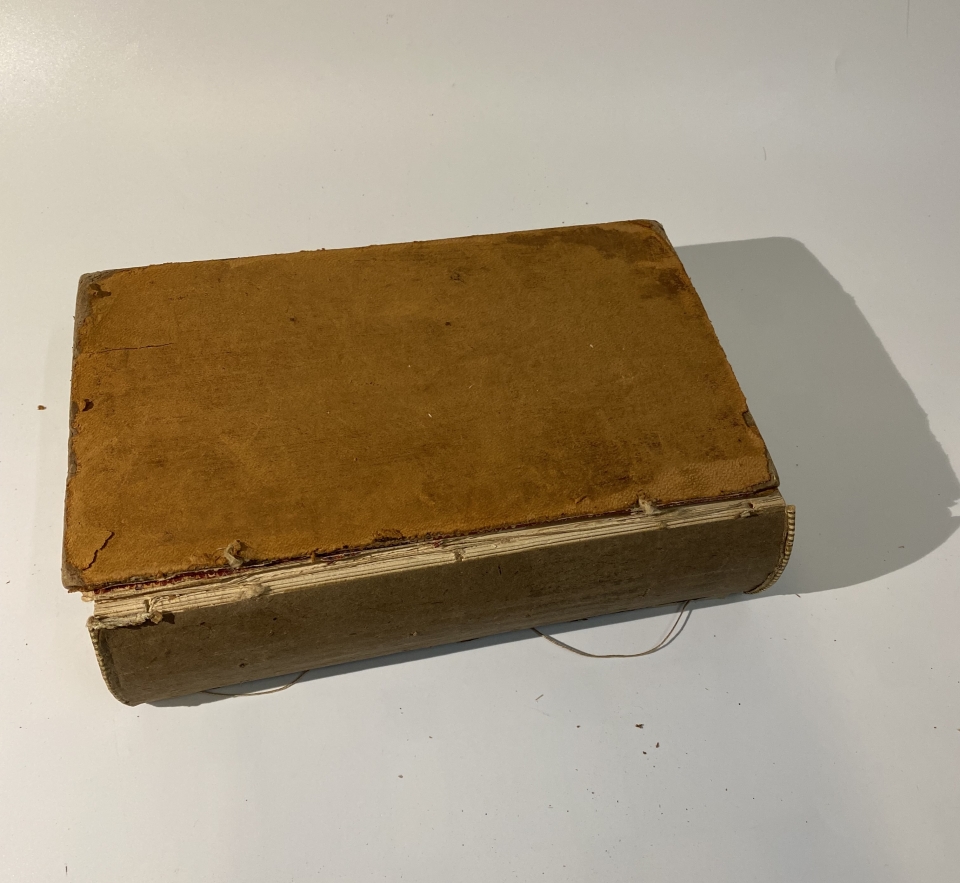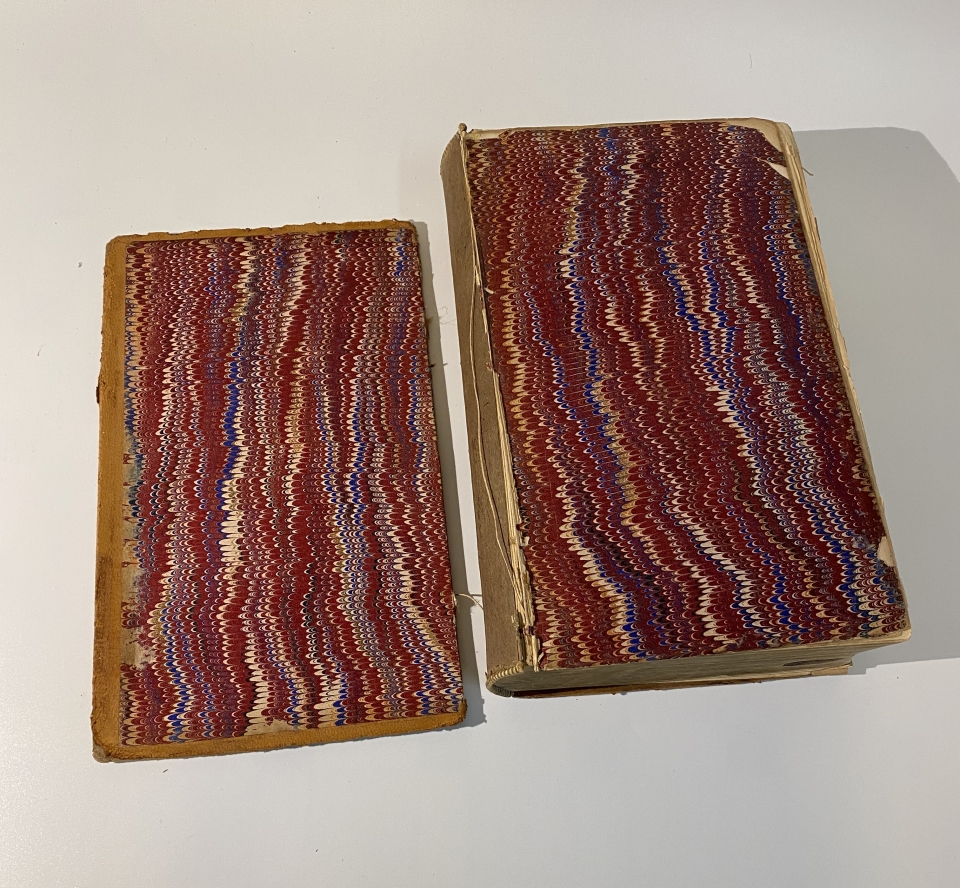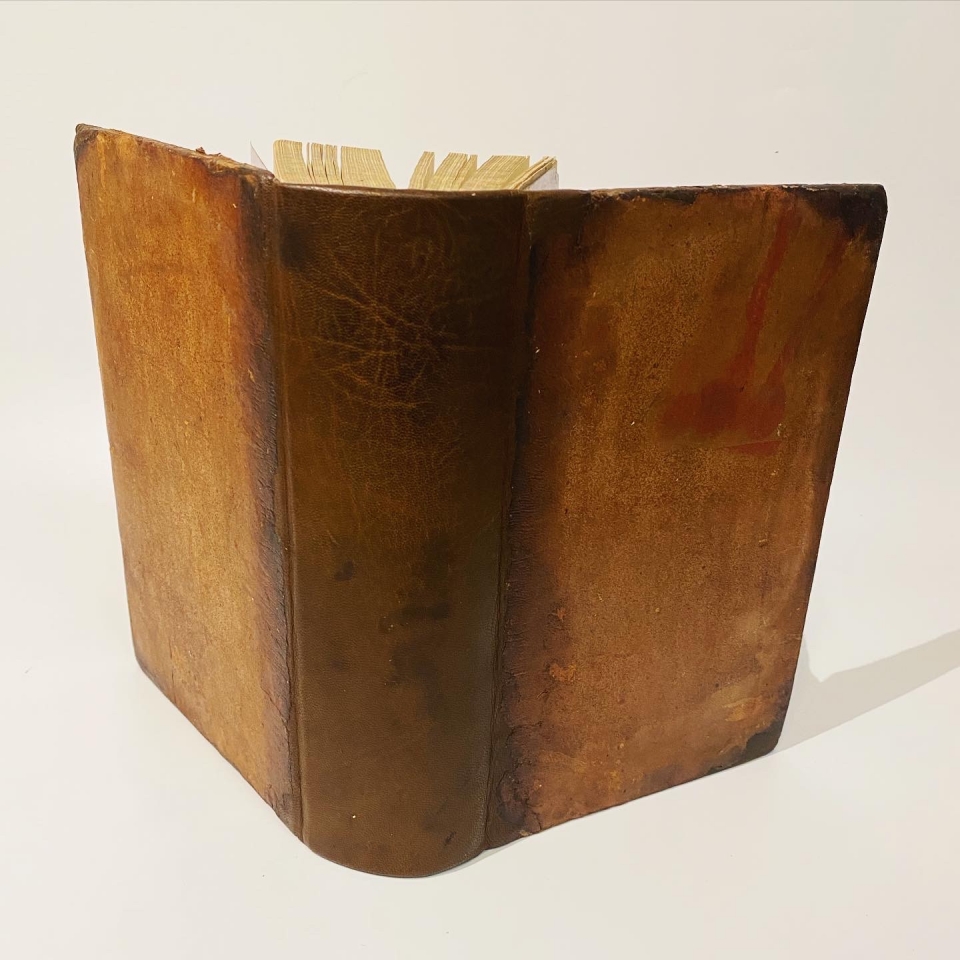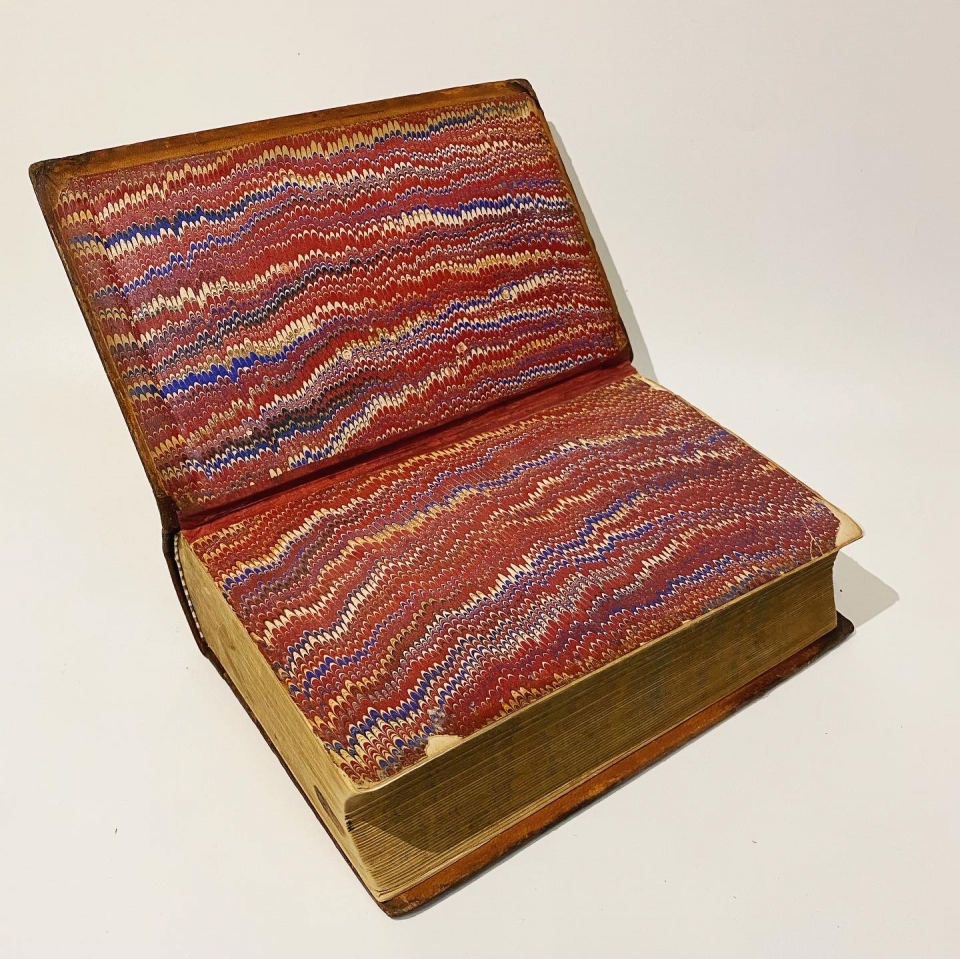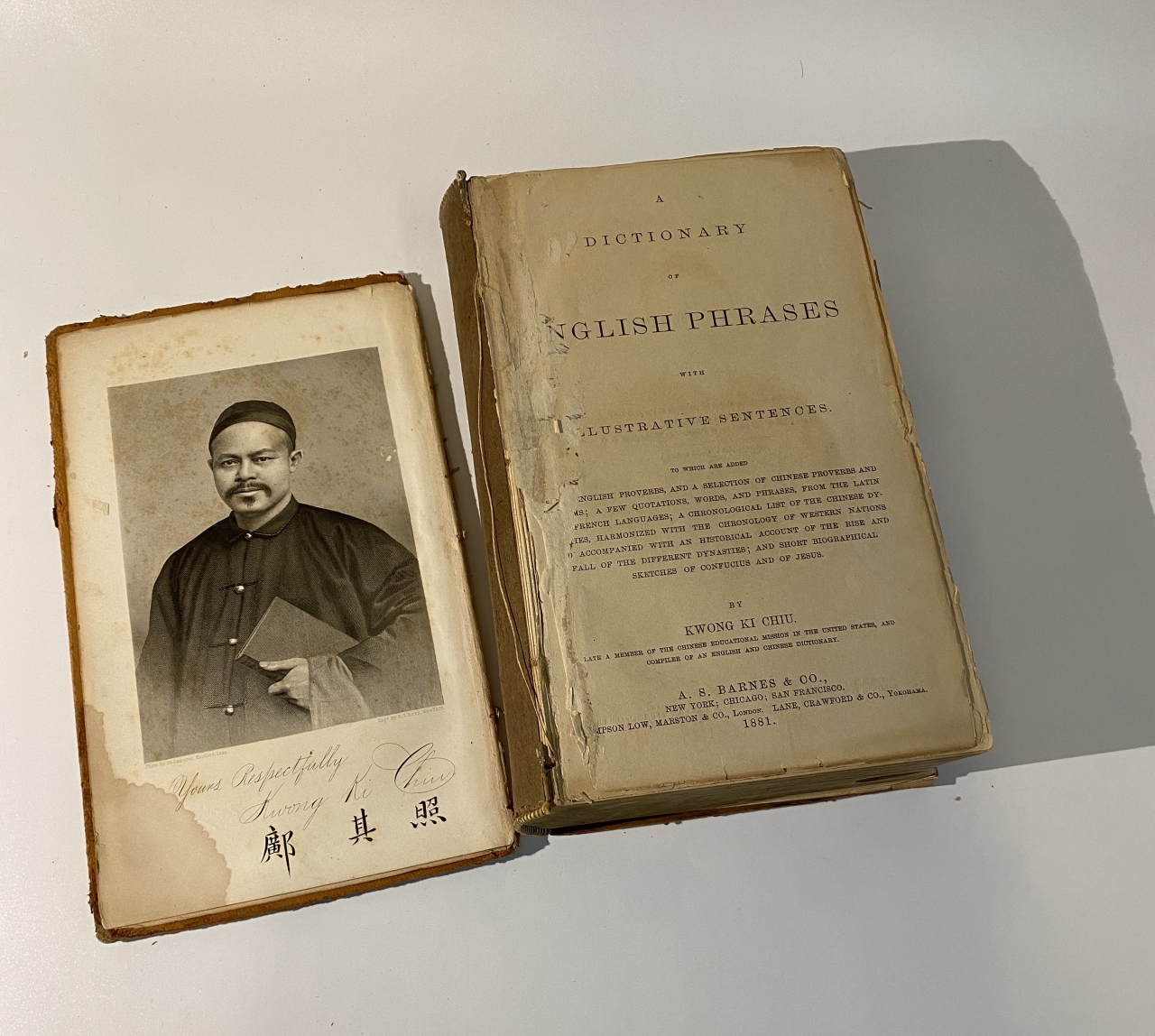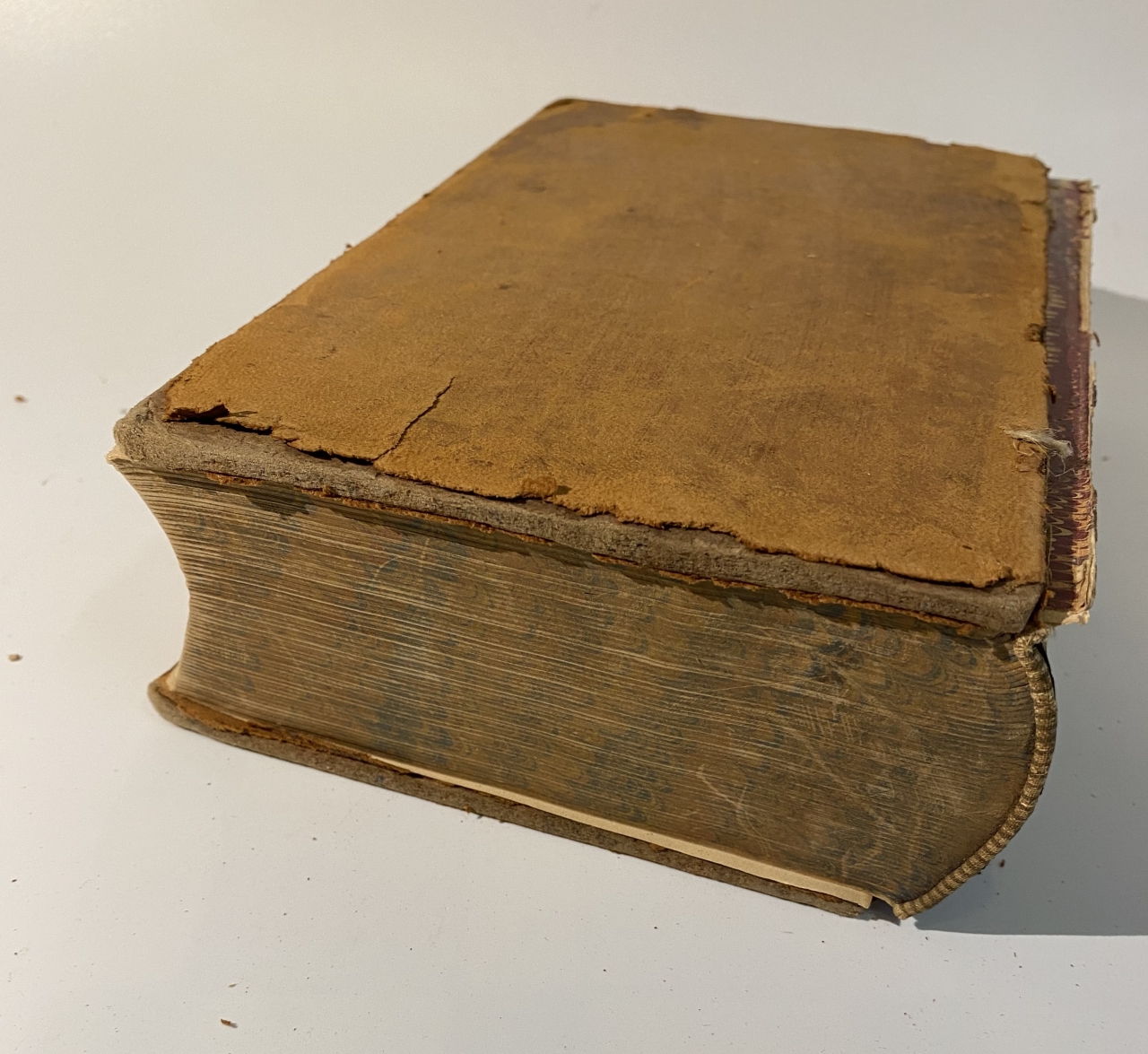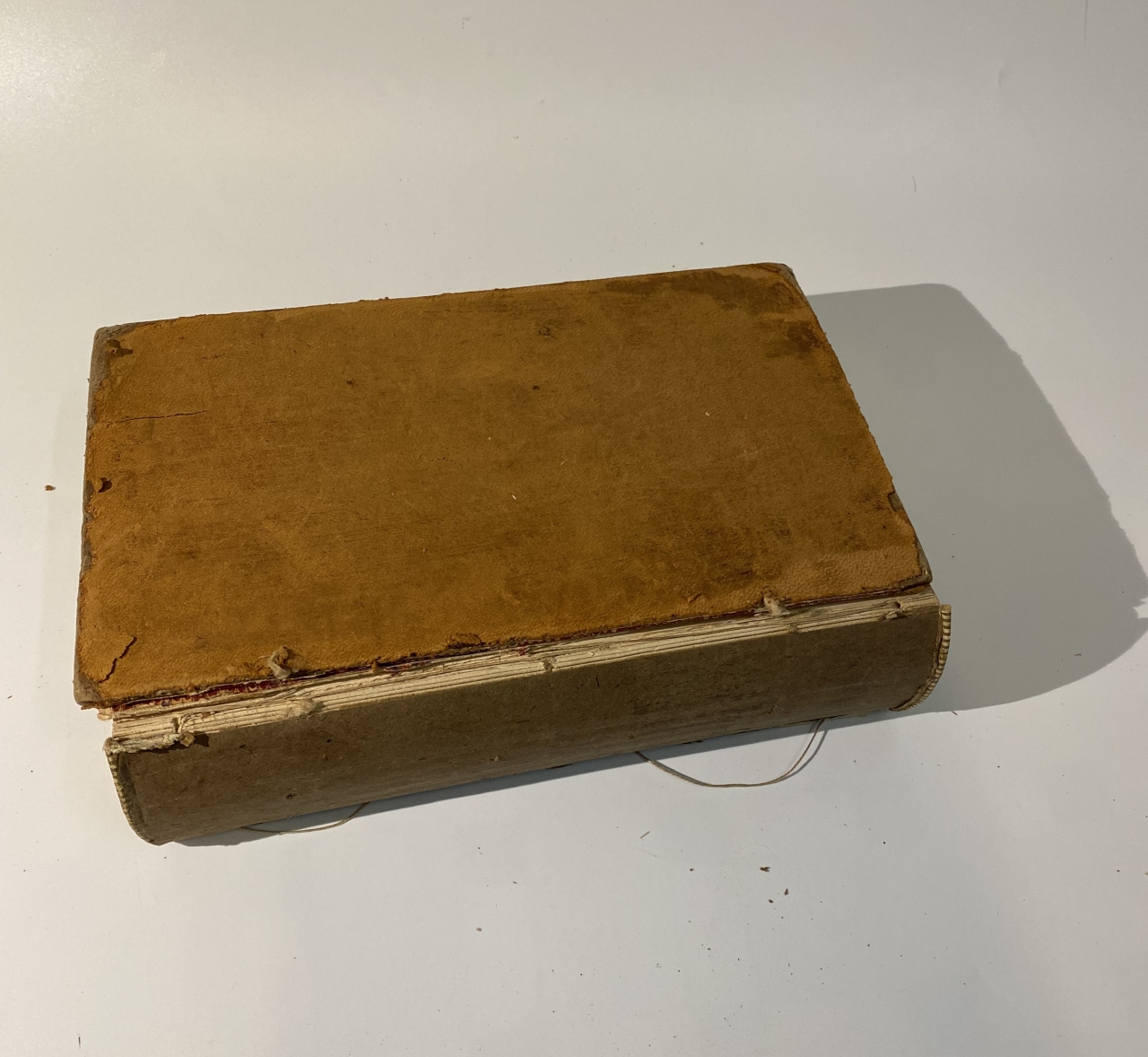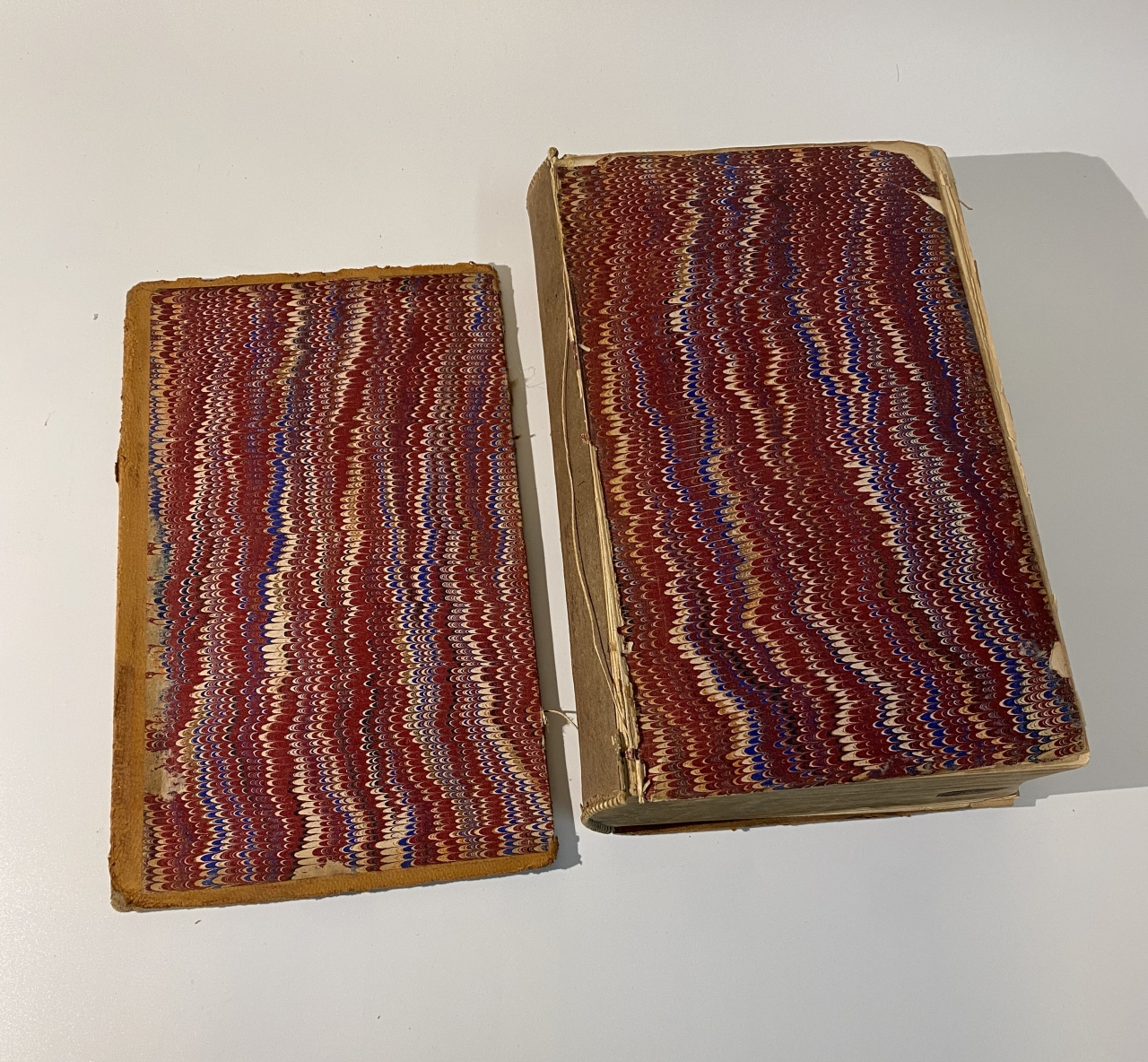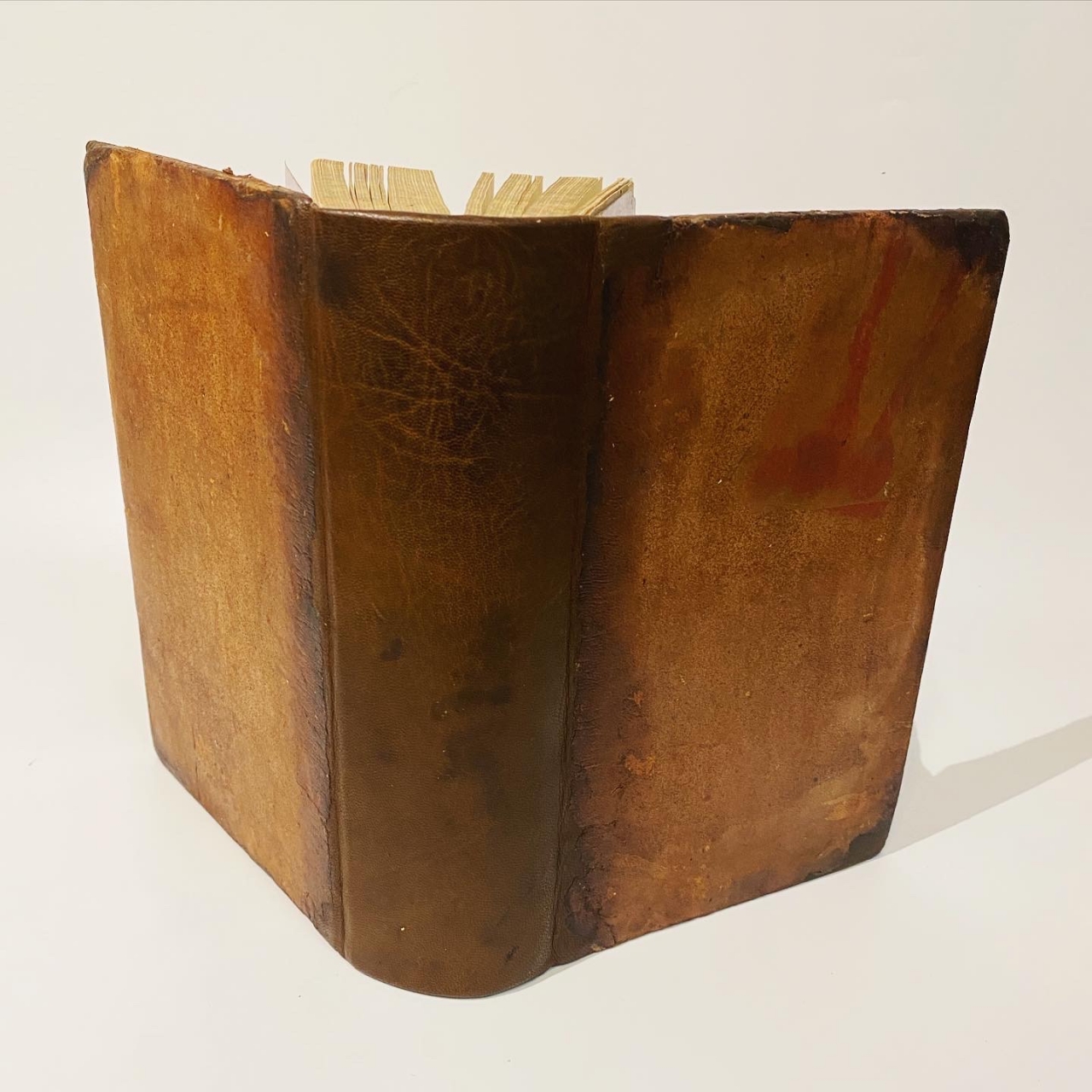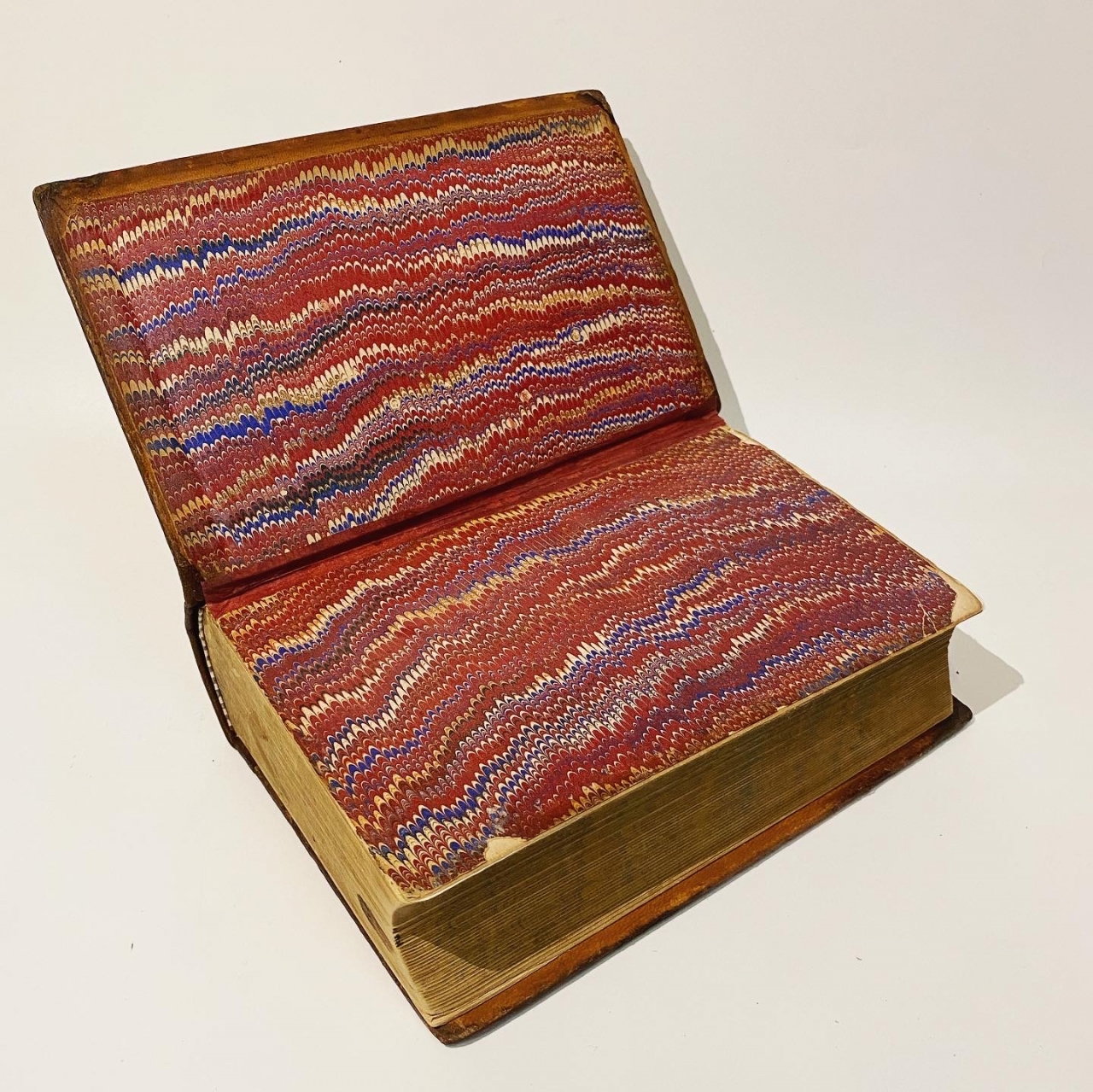Rebacking of English Dictionary of Phrases
Leather repair of a dictionary from 1881
2021-12-13
I just realized that I haven’t posted a blog in nearly a year! This year has been tough, I suppose it has been for most people because of the pandemic. I haven’t been able to work for an extended period of time because of an accident causing me to be unable to move around freely. That being said I have been able to work on some interesting projects over the last few months. There’s been a flow of repair work from clients, the latest ones have all been rebackings, two leather and one cloth.
This is a book from 1881, it is the first English dictionary of phrases written by a Chinese person: Kwong Ki Chiu. The author is my client’s great great grandfather, he has been doing research about his family for the past decade and found out that his great great grandfather was a progressive figure in language education in the transfer of knowledge through translation. He had two copies of the dictionary, one bound in book cloth that was in a good condition and then this one which was bound in leather that has deteriorated.
He thought that the copy bound in book cloth would be more “valuable” due to the condition, but as we looked through the leather bound copy we found an inscription by the author. This leather bound copy was inscribed to the author’s best friend, we concluded that this must have been especially bound for the purpose of gifting.
The book would have been originally bound in maroon leather, due to the deterioration the skin side of the leather has completely fallen off and now reveals the suede of the leather which happens to be a sandy colour. The cover colour would have been cohesive with the marbled edge decoration and marbled endpapers and both of them have maroon as a prominent colour. The spine of the cover has completely fallen off and the cover boards have detached from the text block. There are some paper tears in the first and the last signatures of the text block.
I repaired the paper tears with Japanese paper and wheat starch past (WSP), and guarded the pages of the first signature as they were splitting along the fold. After the spine was cleaned with methyl cellulose poultice, the first signature was sewn back onto the rest of the text block. Paper endbands were attached to the head and tail of the spine with WSP and then the spine was lined with Japanese paper with WSP, airplane cotton with PVA, a hollow was attached one-on two-off. The boards were split along the edge of the spine and the airplane linen was slotted in and glued with PVA (originally the boards were laced in).
The corners and the sides of the cover boards were reinforced with a thin WSP and colour matching Japanese paper was attached with WSP underneath the original leather. After the leather was consolidated with a klucel-G mixture (this helps to reduce the amount of flaking off of the original leather), the leather was lifted along the spine. A piece of brown goat leather was pared in preparation for the rebacking. WSP was used to glue the goat leather and the original leather down. The last step of the repair was to line the hinge of the endpapers with colour matching Japanese paper.
